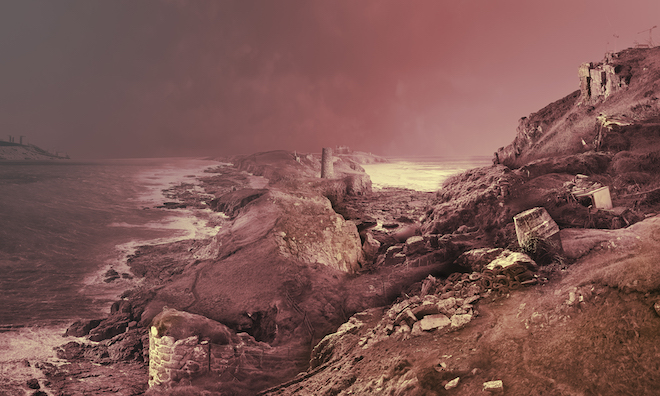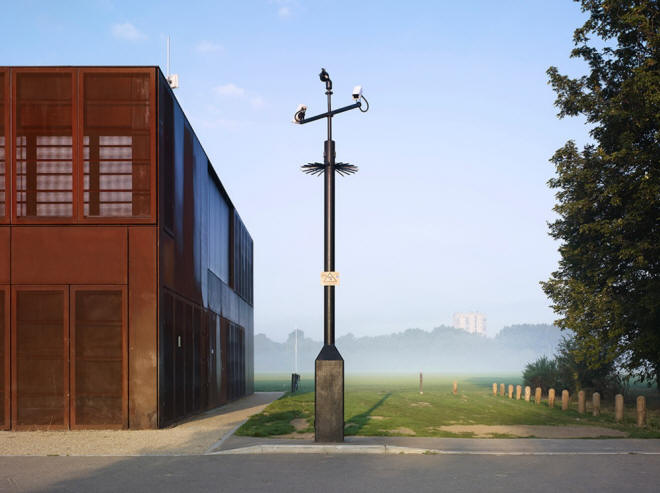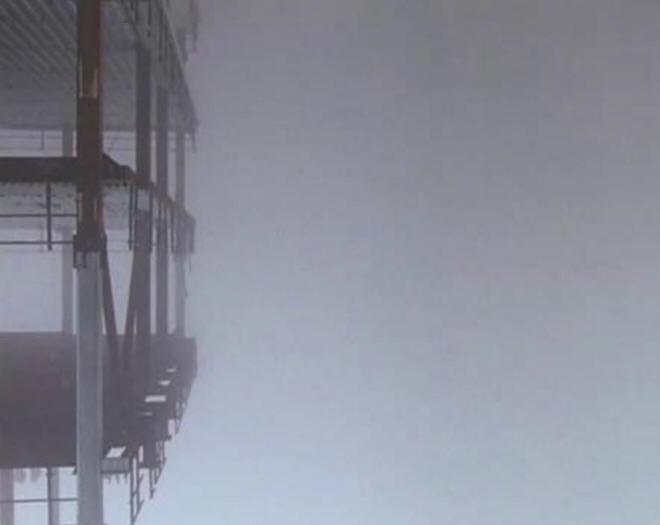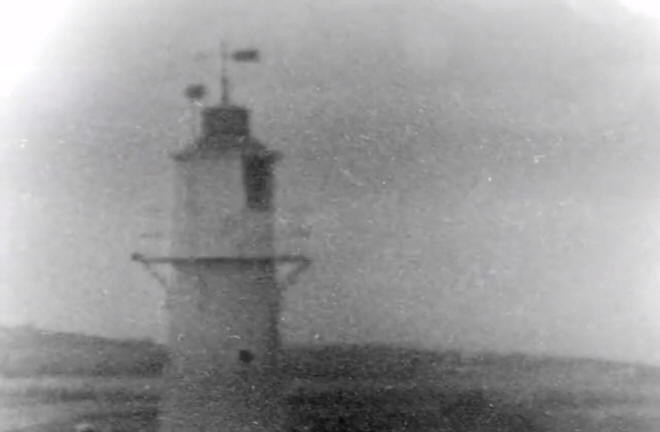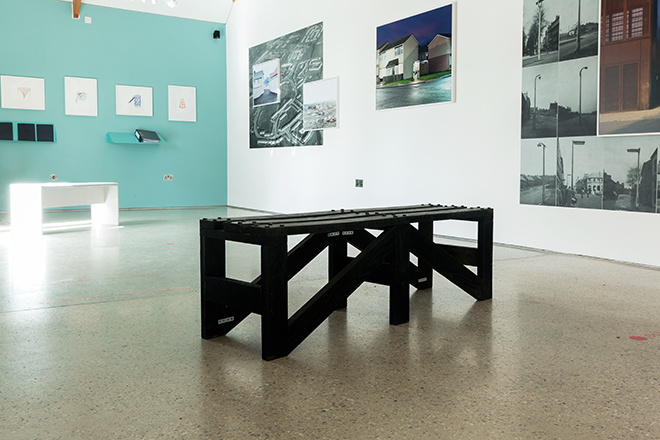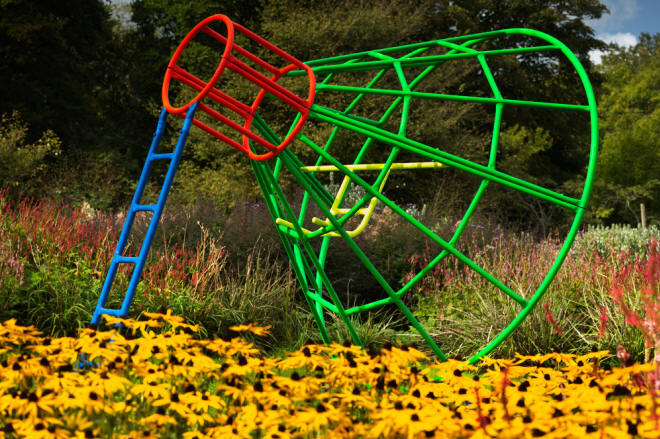|
|
| home | exhibitions | interviews | features | profiles | webprojects | archive |
|
Togetherness: Notes on Outrage Martin Holman
Just over 60 years ago, the architectural critic Ian Nairn forecast that 'by the end of the century, Great Britain will consist of isolated oases of preserved monuments in a desert of wire, concrete roads, cosy plots and bungalows. There will be no real distinction between town and country.' Nairn’s message was, he wrote, ‘less of a warning than a prophecy of doom’. The culprit, he claimed, was unimaginative town planning. In his view, it had spawned the ‘amorphous destroyer’ of variety of drab suburban homogeneity. Nairn even coined a word to describe the unwelcome phenomenon that was eating into the countryside. ‘Subtopia’, he wrote, ‘[is] a mean and middle state, neither town nor country, an even spread of abandoned aerodromes and fake rusticity, wire fences, traffic roundabouts, gratuitous notice-boards, car-parks and Things in Fields’.
Do these words conjure a familiar image? This exhibition set out to assess how far Nairn’s prophecy had progressed in six decades. That was done mostly through images, still and moving, by nine contemporary British artists. Their effect, combined with two objects that expanded the visual experience into three dimensions, was proof that there is more to a photograph than the image. The belief that doom had arrived well ahead of schedule emerged as both the show’s premise and conclusion; open country, when it appeared, was perceived as under threat. If that give-away assumption weakened the concept, the diversity within the work and its strength of presentation provided compensation. This dour mood, after all, entered enthusiastically into the Nairnian spirit of disquiet. The choice of a single phrase to head the project has a powerful precedent. In June 1955 an entire issue of ‘Architectural Review’ was devoted to the aesthetic degradation of the country’s urban and rural landscapes. As well as text, the pages gave generous space to photographs and dry, spiky line drawings. They illustrated the chilling vision of ‘the annihilation of the site, the steamrollering of all individuality of place to one uniform and mediocre pattern.’ The magazine carried the single, emphatic title: ‘Outrage’.
‘Outrage’ instantly raised the temperature of discussion – where any existed. As well as a prophecy, the publication was a call to action. Its impact was far-reaching: republished as a book (above x2), it helped to inspire New York urban campaigner Jane Jacobs’ titanic battle with City Hall during years of aggressive urban change. Jacobs urged communal cooperation, insisting on a voice for dwellers as well as developers. Jacobs turned a tide on waves made by ‘Outrage’. Characteristically, Nairn wrote most of the copy himself. He also took the photographs. He was a perceptive observer at heart, devoted to topography and scale. As an RAF pilot he had surveyed the landscape from the air and, back in civilian life aged just 24, he was already a pungent critic of his surroundings when he made a south-north tour by road. ‘Outrage’ was the outcome. Strong beer, indeed; Togetherness was mild in comparison – less a call to arms than an invitation to mourn. Encountering an exhibition about the modern urban blandscape in the richly varied bucolic preserve of rural West Cornwall required quiet examination. In the neighbourhood of Kestle Barton, at least, open space and rugged nature thankfully appear still to have the upper hand. The location alone was a reminder that nine-tenths of the UK’s landmass remains unbuilt upon. But for how long? Here, again, Nairn can be a guide. ‘If you feel like working up a head of steam about the shortcomings of English architects, engineers and town planners, the South-West is a good place to go,’ he remarked in 1967 by which time he had turned against modernism as well as planners. Those words, however, justify the unlikely invitation to the organisers to transfer this show, originally conceived last year for the organiser’s gallery, South Kiosk in congested Peckham, South London, to the domain of the holiday-let and the second home.
Nairn’s alarm for the region sounds through Felicity Hammond’s Land’s End, 2017 (above). Her vision of Cornwall’s iconic headland is carried out on a scale large enough for the viewer to imagine being in the scene itself. These immense dimensions recall the grandest painting of the past: Renaissance frescoes, perhaps, or the history paintings of Napoleonic France. And, of course, it evokes the English romantic tradition epitomised by J.M.W. Turner that fired the heart as well as the head. Like Nairn, Turner was an inveterate traveller of these islands. He depicted Land’s End from the same point as Hammond in the 1830's. The imagery of both enforces a sensory and emotional reaction, and in the process reveals an unsteady disjuncture of means and influences. Hammond’s hyper-realism brings to mind advertising hoardings (a target of Nairn’s ire in the mid 1950s) made more sophisticated by technology. These immense panoramas now girdle prime building sites with printed images extolling the future while shielding the sensitive from the ugliness of actual construction. Hammond carries the analogy of construction into the image. The view is fabricated from elements collected elsewhere and pasted into place. As a visual concept, collage is closely associated with the beginnings of modernism. Picasso and Braque glued paper patches to the surfaces of their paintings. That action complicated the traditional perspectives of the age-old idiom, especially in respect of space, time and materiality. Now the act of pasting is less physical and more seamless, and builds into head-turning illusions. All that is needed to fake reality is the right programme. Hammond’s work has the expansive confidence of real estate promises; of a better tomorrow, here clothed in the all-over roseate hue of unduly wistful thinking. Optimism is co-opted by capital where it harbours the paraphern-alia of degradation brought about by expedience – the straggle of wire fences, the jumble of expired workings and the far-off skeletal outline of high-level cranes. In her accompanying brief text (Turner also appended words to his exhibited paintings), she wonders whether, with the uncertain times into which Brexit Britain is sailing, ‘areas that were once protected might need to fulfil new functions, providing a new local economy … will the once untouched coastline become just another subtopian development?’ Since Nairn coined the phrase, subtopia has gained in fresh currency with a generation mistrustful of utopias and drawn towards portrayals of social dystopia. Nairn himself took aim at rampant forces - speculative builders, public utilities, advertisers and local bureaucrats – that he perceived as eroding the balance between urban and rural landscapes. Writing in ‘Outrage’, he observed that ‘the more complicated our industrial system and the greater our population, the bigger and greener should be our countryside, the more compact and neater should be our towns.’ This idea of ‘compact cities’ has neither disappeared nor been widely achieved. The topos, or place, mattered to Nairn for its individuality. While he urged conservation over wholesale redevelopment of historic town centres, he was not an antiquarian, nor was he locked in the amnesia of nostalgia for the past. He praised good architecture, regardless of era. He could be enthusiastic about flyovers and a newly-built primary school; he like the brutalism of London’s National Theatre; and he prized the shock contrasts and jokes that give flavour to the built environment. But it had to know its place.
For Nairn believed that buildings affected people: how architecture worked in a landscape not only gave identity to a place but shaped the lives of its inhabitants. ’Subtopia produces subtopians,’ he warned. Polly Tootal photographs these same fringes (above). They have become the wasteland where the centre drains into soulless generalisation. The striking absence of humanity in her night-time images paradoxically reenforces the knowledge that people work in these peripheral business parks and settlements, and many live there. Tootal has a penetrating eye for composition and atmosphere. The abstract elements that shape her images are dispassionate and factual: angles and viewpoints, gable ends and skylines, and the geometry of scaffolding, modern call boxes and lampposts. They correspond to the ‘typologies of ugliness’ that Nairn witnessed as colonising the suburbs: featureless buildings and street paraphernalia with no local variation. Even natural colour acquires synthetic tones under flat sodium lighting. So objective are these images that it is easy to wonder if they are painstakingly staged theatrical inventions. Any suspicion of unreality derives from their authenticity; they seem too true. Tootal’s vision is not as neutral as perhaps she hopes and the viewer feels compelled to interrogate the artist’s motives, assuming that a trace of empathy must exist in the work. The eye absorbs information and exposes the substance filling these ‘empty’ vistas. She assigns numbers to her photographs as if to underline the ubiquity of such communities; individual location is deleted. In #43534, 2014, (above) geometries combine against a horizon clouded by the early morning mist that rises onto a sunny day. Often working in the early hours or at night, when few people are around, Tootal observes with haunting precision the space circulating between structures as critically as the structures themselves – the rectilinear architecture, the tree enclosed by bollards and, standing between, the spiky mast topped by a CCTV surveillance camera. These obstacles surely count today as equivalents of those ‘Things in Fields’ that Nairn foresaw with anguish. Like Hammond, Tootal directs her work at the audience’s sensibilities. Bracketing that experience in still imagery are short films by six artists made independently of this show’s brief but nonetheless in tune with it. Catherine Yass and Jamie George, as two of these ‘fellow travellers’, exploit the geometries that have supplanted notions of space in modern Britain. Like Tootal, neither artist reveals a location, admitting silently the anonymity that enfolds contemporary urban existence. In Descent, 2002, (below) Yass anticipates the eerie atmosphere found in Tootal’s later photographs; they share an interest in materialising the empty spaces in-between. Yass’s camera travels vertically as the framework of a skyscraper under construction scrolls down the left side of the screen. As it ascends through a shroud of mist that muffles sound and pushes the picture towards ashen monochrome, the building becomes more complete, not less so, in the unlikely illusion that is being put together from the top down.
With expectations contradicted, only gradually does the viewer realise that the camera is actually travelling downwards. The film has been reversed and the ‘ceiling’ that presses into view from the top edge is, in fact, the ground. Once more, a title acquires a critical presence in the process of interpretation. Does, for instance, ‘descent’ translate as ‘fall’ or ‘crash’? Tall trophy buildings now symbolise the mobility of global capital flooding into property. As markets soared in the new century, few predicted the financial catastrophe of 2007-8. Of course, Yass was not to know that in 2002. But she made the film in the months after 9/11. Two colossi of modern city planning and business hubris had crumbled on violent impact with an ideology distorted from scripture. The aftermath lingered like the immense dust cloud that consumed the tragedy. Less subtle but similarly detached and thoughtful is George’s Throwing Up Pulling Down, 2013. The title, however, needs less analysis. The act of ‘throwing up’ requires little care, however it is understood. It can seem that, in housing policy as elsewhere, structures are thrown up in response to urgent need. In this film the camera travels horizontally through wrecked rooms and along narrow walkways in a housing estate undergoing alteration or, more likely, demolition. Unwelcome incursions into the landscape trouble filmmakers Tom Crawford and Mark Jenkin. In Crawford’s Me, the boy and Raventide, 2016, a girl’s encounter with a mysterious man takes place in one of those in-between, unclaimed spaces that proliferate in Subtopia: areas of scrub and broken Tarmac are clichéd into hosting intimate, life-changing encounters. Jenkin’s film, If this is no-one’s then it’s ours, 2013, (below) directly addresses the risk to Cornwall. This sharp-edged, self-developed, celluloid hymn in monochrome to the ‘beautiful ugliness’ of Sandy Cove, the pebble beach in Newlyn. Like much of the Cornish coast, this spot had been worked until recently by successive generations, most recently in aid of a nearby quarry. At present, however, no money interest has use for either its location or resources. Consequently, for the time being, the scene presents, the narrator implies, a ‘picture of contentment’. The thought hanging in the air seems to be: for how long? The lens picks out the boxy shapes on the far horizon of edge-of-town supermarket sheds, the postwar building type symbolic of subtopian commerce. Perched above the distant shore, outside Penzance, they could be the tents of a foreign army.
Nairn underlined the visual experience of standardisation with an attack on poor and obtrusive signage, traffic congestion and unsympathetic street furniture. The spread of graphics across wall and floor in this show, therefore, struck a further ironic tone, but the inclusion of two objects among the still and moving images made complete sense. Both introduced geometric presences. One was Joseph Townshend’s black bench titled Everything you need to know to build a Mock Tudor bench, 2016 (below). It occupied the centre ground of this exhibition. The ribs of its structure happened to echo the exposed beams and trusses overhead in the gallery’s roof. But these formations were not cousins. The ceiling exuded organic character and an acquired consciousness of place; the bench flaunted its devitalised construction in coloured synthetic veneer impressed with the pattern of an oak grain texture. It squatted like an ersatz cenotaph to the values Nairn berated as ‘making an ideal of suburbia... the universalization of our town fringes.’
By contrast, Shaun C. Badham’s tubular-steel climbing frame bristled with primary colours. Placed in the gallery’s garden among beds planted for summer flowering, the upward tilting structure sat begging for playing and the influx of imaginations. What’s more, it glowed in the dark when a UV torch was shone upon it. Badham calls his project MORNING (below). Completed in 2017, it is part archive, part installation and part revaluation of the legacy of postwar reconstruction through town planning. It wholly fits here and is the contribution with a practical application, one that inspires hope. His inspiration was the Essex village of Laindo, a place of ancient origin that was radically transformed by the New Towns Act of 1946. It became a suburb of Basildon, reformatted into uniform modernity, to house London’s overspill population. The family was promoted as the cornerstone of life in the new towns. Unsurprisingly, children became the primary target for town-hall experiments in social policy. For future generations to be safely integrated into urban life, the provision of organised playgrounds was regarded as fundamental. The story is familiar and Bradham’s tackles it through his focus on the town’s playground. Councils planted tubular metal climbing structures in parks across Britain, all of it bought off the shelf rather than modelled locally. A popular range in the 1960s adopted the shapes of space vehicles, satellites, bridges and launch gantries, and some equipment was given eye-catching, multi-coloured liveries. Kestle Barton hosted a ‘moon probe’ framework; it resembled a tethered space capsule. Badham tapped into the municipal politics of recreation. Rather than dwelling on the demise of commun-itarianism, this artist offered a route to its renewal. His archive documents how the playground suffered once local funding dried: weeds grew and paint peeled. Behaviours also changed: fearful of the outdoors, families retreated inside once the atomised, solitary indoor play area of the Internet captured young minds. The black humour in his title traces is well placed: Morning is a homonym embracing bereavement and the cyclical rebirth of daylight.
Badham’s response to the forlorn state of his Essex playground was to reclaim its original visual impact. Drawing on local people’s reminiscences of the location’s heyday, he revived the weathered elements by coating the structures in primary colours and reinvigorated their potential for play. As importantly, the restored frameworks became a fitting repository for memories of adults who played in this park as children. Togetherness, indeed. With objects that were equally about design and sculpture, about direct use and withdrawn reflection, Townshend and Badham turned aesthetics to an ideological cause. These two artists succeeded by allowing simple forms to swing through the index of collective experience. They captured Nairn’s Jekyll and Hyde personality; even in anger, Nairn was not a pessimist. At least, not at the time he wrote ‘Outrage’. The good-humour of his pioneering younger days seems to inhabit Badham’s quirky, coloured play frame. The black, brooding centrality of Townshend’s bench could allude equally to the impoverished streetscapes of new developments as to Nairn’s mood towards them once his patience ran out. In 1966, Nairn’s feature in the ‘Observer’ shouted: ‘Stop the architects now’. He was now excoriating the profession. ‘The outstanding and appalling fact about modern architecture,’ he announced, "is that it is not good enough." The architect, he warned, was detached from the lives of the public, ‘a wet kind of nuisance, fingering his bow-tie on the edge of real life’. This show did not match Nairn for firepower – who can? Togetherness was an altogether more passive look at the state of our country, its towns and of the battleground spaces in between. The contributors reflected on the message of ‘Outrage’ powerfully delivered by pen and photograph. This show recognised the continued relevance of Nairn’s prophecy – to communities concerned at the loss of local services and to the advance of high-street multiples to the drum of high commercial rents. It took the discussion off the printed page and into creative actions, objects and public space. Whereas Nairn lit a beacon, Togetherness flashed like a continuous distress signal set out on the road. It pointed to further trouble ahead. Martin Holman is a writer based in Penzance © Martin Holman 2017.
see http://artcornwall.org/exhibitions/Kestle_Barton/Kestle_Barton_Togetherness.htm for installation shots |
|
|



